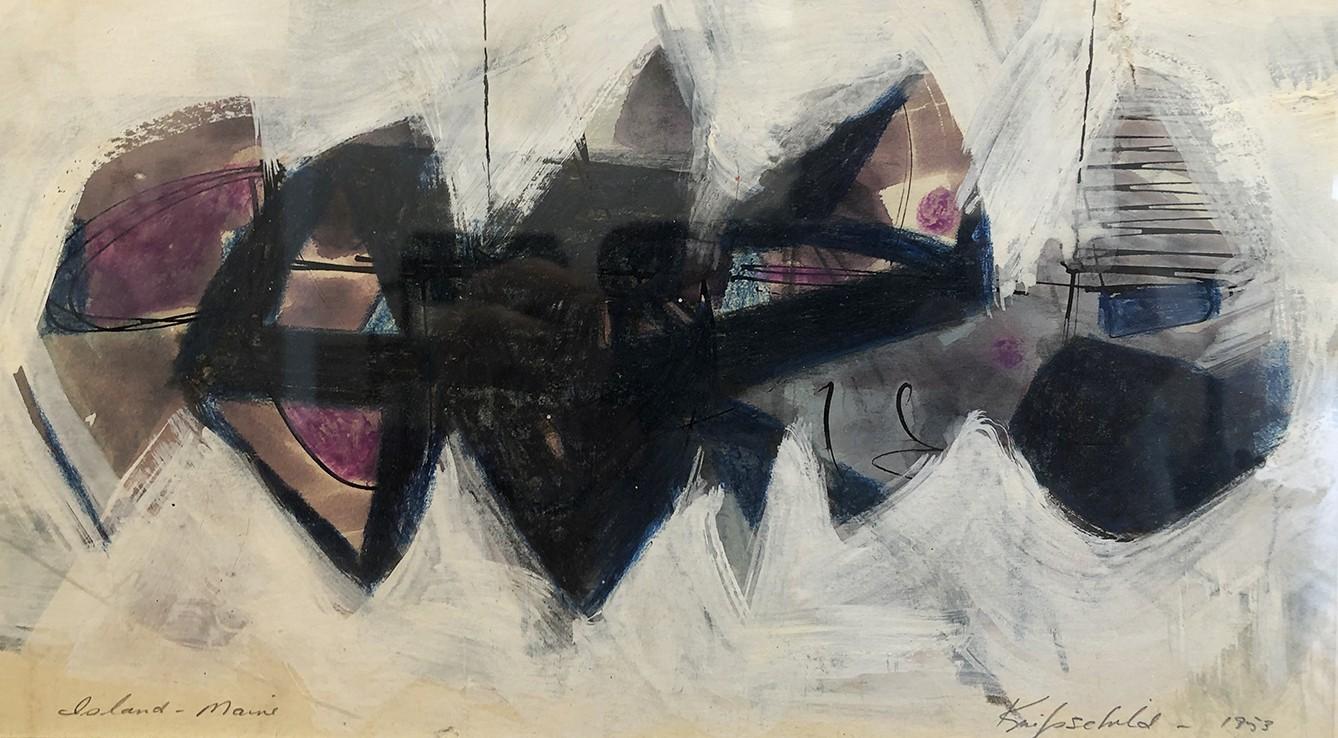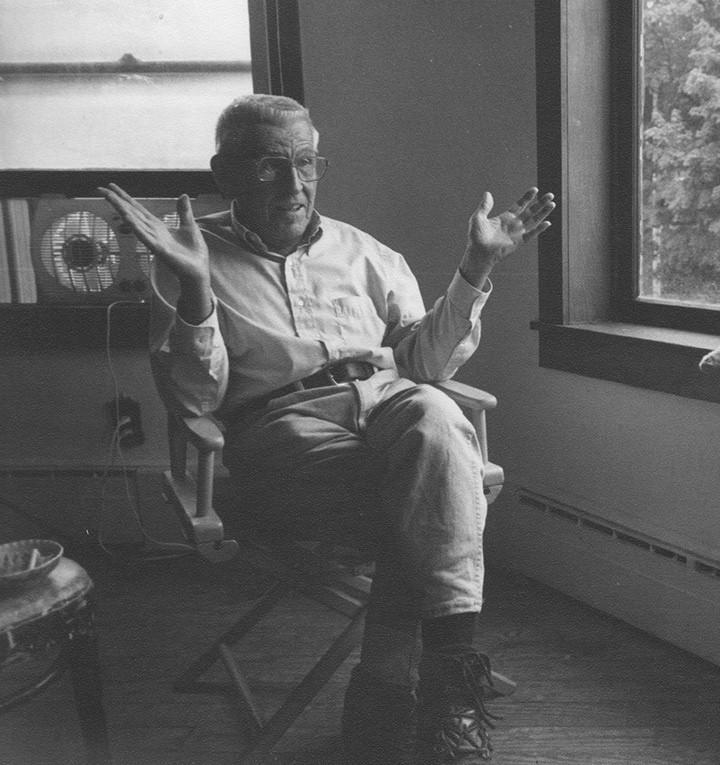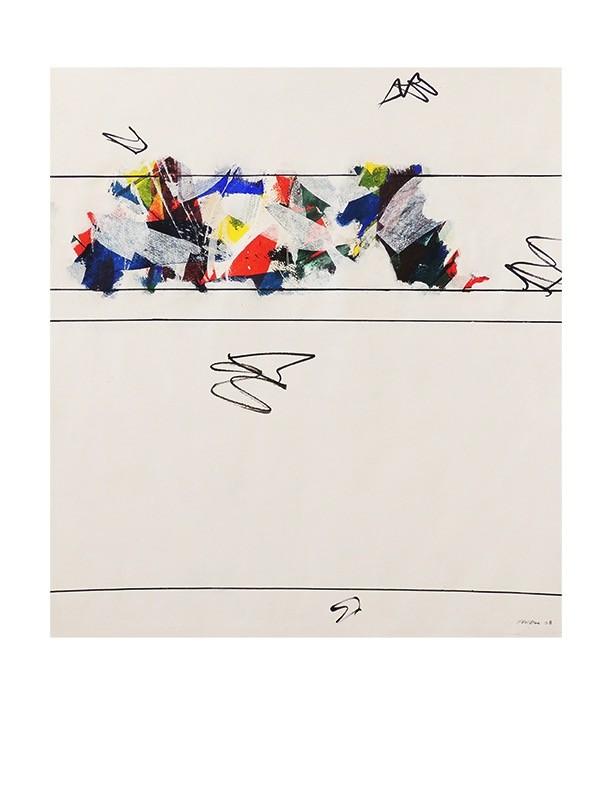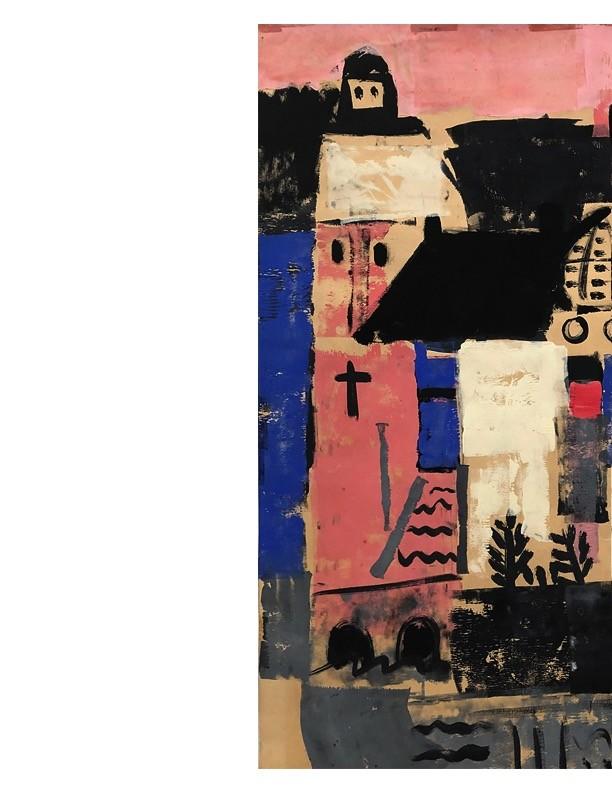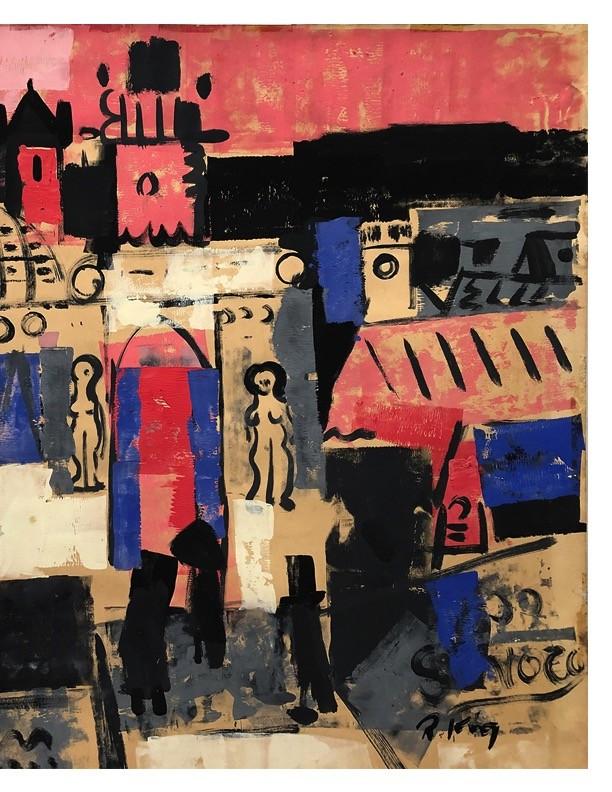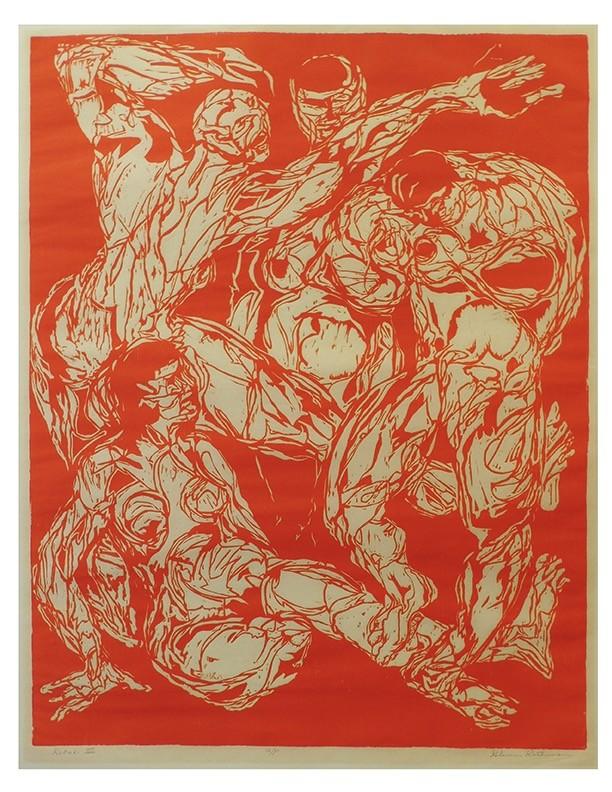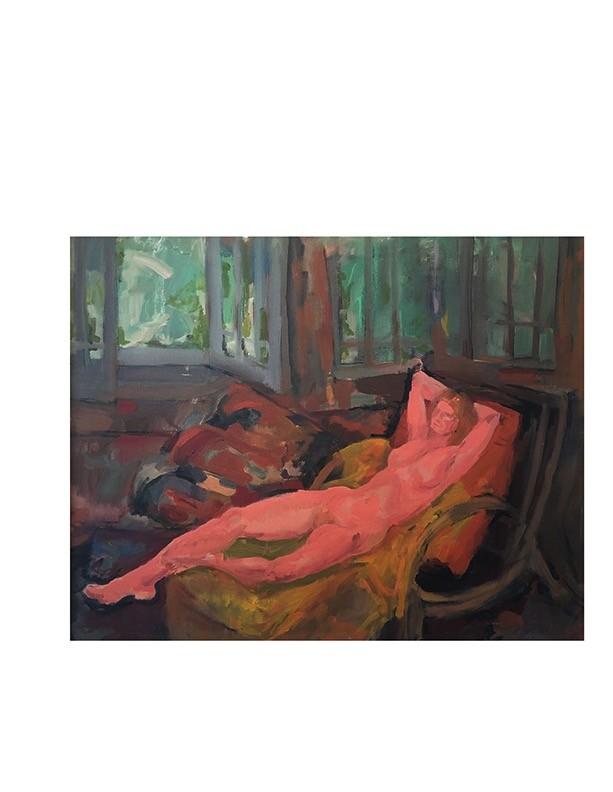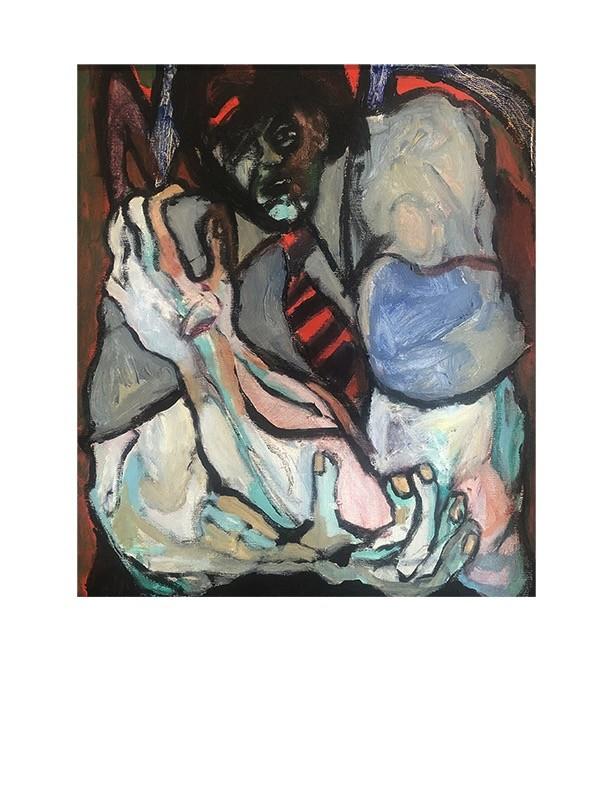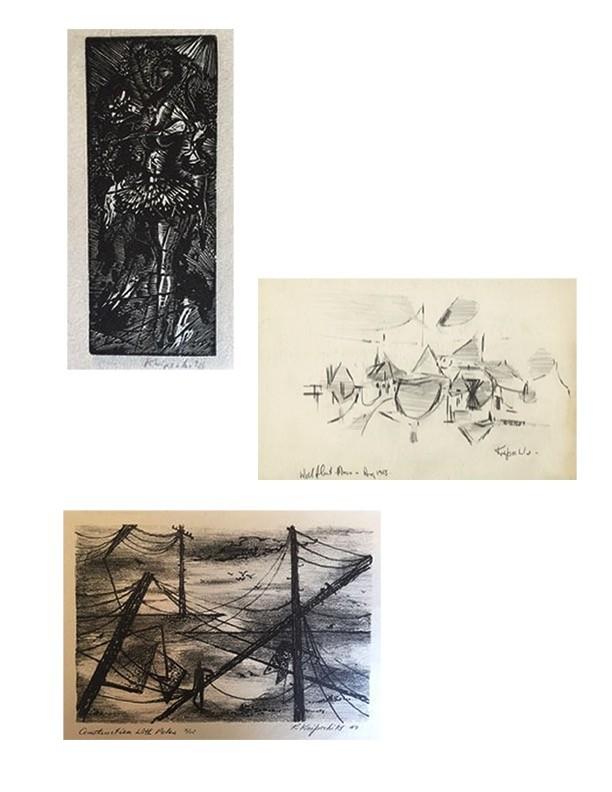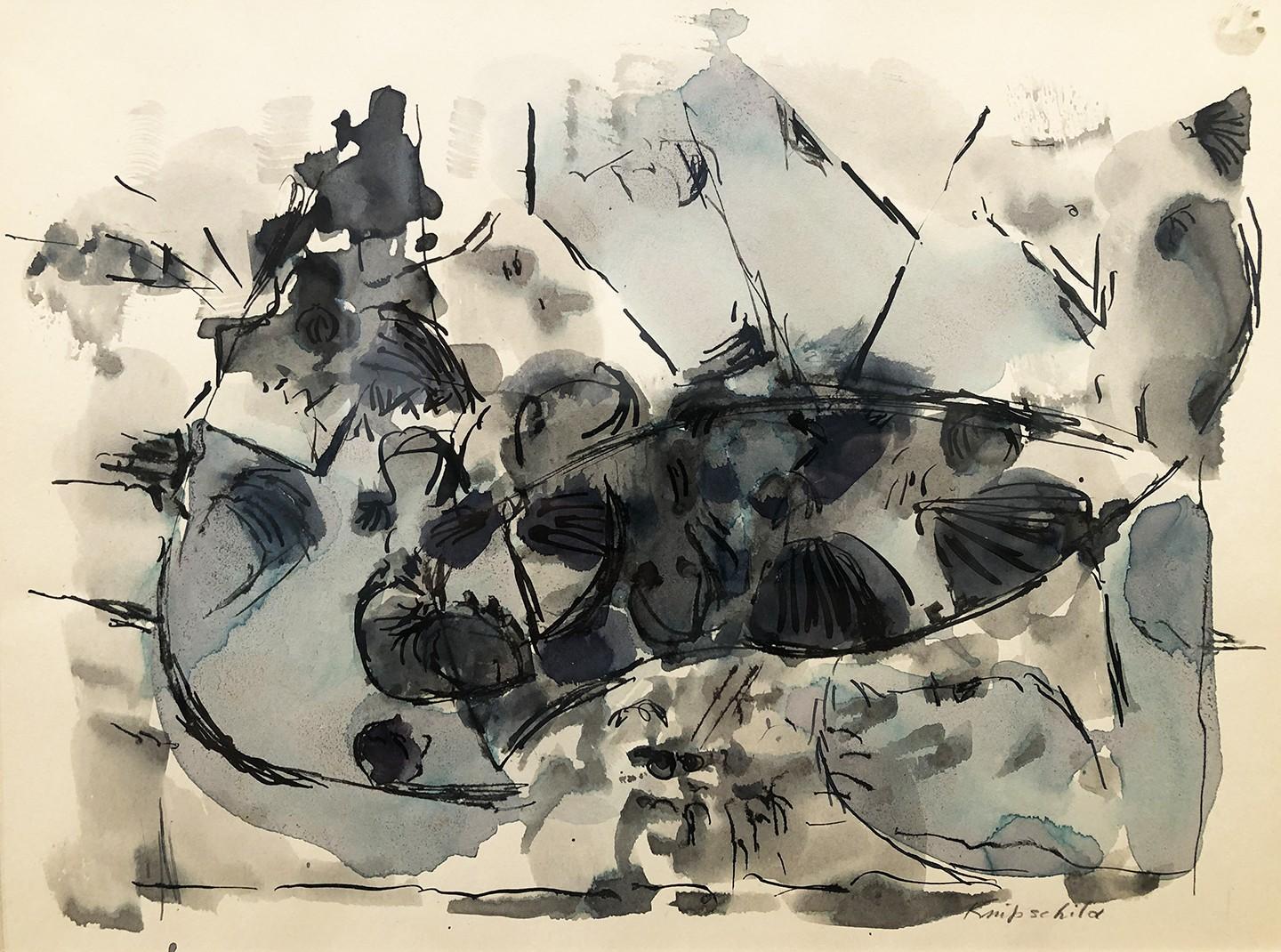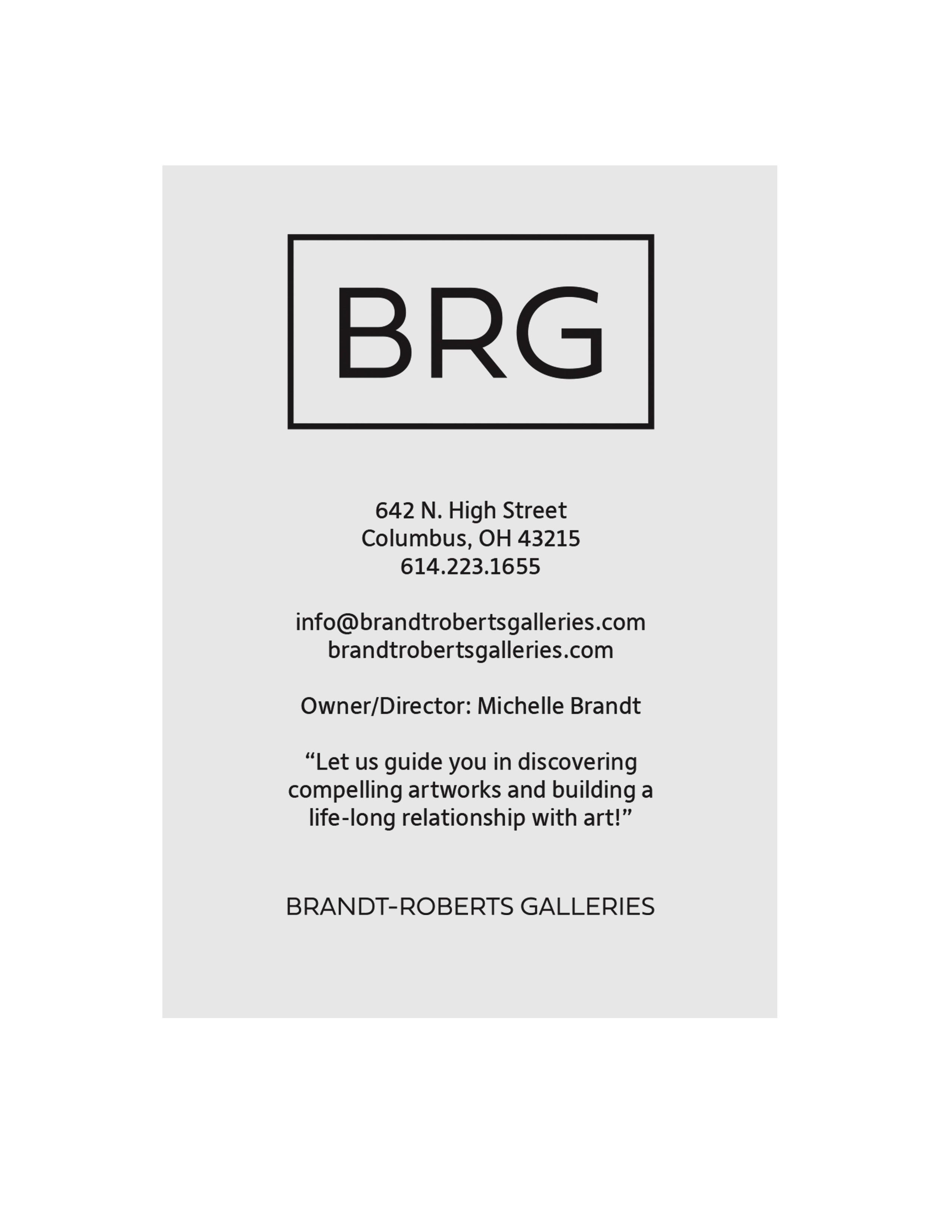

OHIO MID-CENTURY MODERNISM | Modernism as a general term refers to a shift globally in which society and culture sought to align themselves with experiences and values of modern industrial life. This movement began in the early decades of the twentieth century and culminated in the 1960’s. From an arts perspective, artists around the world used new imagery, materials and techniques to create artworks that they felt better reflected the realities and hopes of modern societies. Although many different styles are encompassed by the term modernism, there are certain underlying principles that define modernist art: A rejection of history and conservative values (such as realistic depiction of subjects); innovation and experimentation with form (the shapes, colors and lines that make up the work) with a tendency to abstraction; and an emphasis on materials, techniques and processes.
The visual artists of the American Midwest were not excluded from the modernist movement. In fact, these modes of thought were flourishing in art departments at Ohio colleges and universities. Ohio Mid-Century Modernism will feature artists working and residing in Ohio who influenced the artistic landscape of our region primarily during the years between 1940-1965. Artists featured will include, Robert King, Robert Knipschild, Al Newbill, Glenn Rothman, E.F. Hebner, and Stanley Twardowicz.
 E.F.Hebner, Urgency, Itaglio print, 13.5 x 27.75 in. framed, $750
E.F.Hebner, Urgency, Itaglio print, 13.5 x 27.75 in. framed, $750




Robert Knipschild was born in 1927, in Freeport, Illinois. He studied at the University of Wisconsin, and at Cranbrook Academy of Art where he worked under Zoltan Sepeshy. In 1950, at the age of twenty-three, his work was selected for the Metropolitan Museum of Art’s widely acclaimed exhibition “American Painting Today.” Since that time he has received wide recognition with over seventy-five one-man shows and several prizes in important competitive exhibitions. Knipschild’s work has been exhibited at the Boston Museum; the Baltimore Museum of Art; the Museum of Modern Art; the Whitney Museum, the Corcoran; De Young Museum, San Francisco; the Walker Art Center, Minneapolis; the Museum and Contemporary Art Center, Cincinnati, Ohio.
Knipschild’s work has been included in important surveys of American Art including the Annuals of the Whitney Museum, the Carnegie Institute, the Walker Art Center, the Pennsylvania Academy of Fine Arts, the Butler Museum, and the Kansas City Museum. He has also exhibited in museums in Europe, Japan, and Australia.
After a brief illness Robert Knipschild died on November 20, 2004. He was the director of graduate studies in Fine Art for the University of Cincinnati from1967 until his retirement in 1991.

Robert Knipschild (American, 1927-2004)
 Robert Knipschild
Robert Knipschild

 Robert Knipschild
Robert Knipschild

Glenn Rothman
(American, 1930-2007)
Glenn Rothman was an artist of many mediums. He was classically trained in both painting and photography, though his work during his most active years in the 1950’s is oil on canvas. He earned both a Bachelor’s and Master’s of Fine Art from Washington University and Southern Illinois University, respectively. He held teaching positions at a variety of institutions, including The Museum Art School in Portland, Oregon, Columbus College of Art and Design, and The Ohio State University.
In the 1980’s, Rothman began digitally altering his photographs on a computer, creating highly stylized, vibrant images. He is considered a pioneer in this field as computers and digital alteration were very new technologies at the time. His 1989 solo show at the Viridian Gallery in New York City was the first solo show of computer enhanced photography ever. These works were recently on display at the Ohio State Faculty Club in a 2014 show titled A New Way to Paint: Computer Enhanced Photography from the 1980’s.

Rothman has noted in a 1996 artist statement that much of his artwork “pertains to social freedom; issues which affect all of us regardless of gender, race or preferences.” Though many of his paintings express these sentiments literally, his later computer-based work moved to more metaphorical representations of social issues.
Glenn Rothman’s works have been featured in over fifty solo exhibitions, including the Viridian Gallery in New York City and the Janus Avivson Gallery in London, UK. He has won the Juror’s Award for the group show Small Works at the 8o Washington Square East Galleries in New York City, the Medal award at the Solomon Gallery in Los Angeles, California, and the Purchase Award at the Parkside National Small Prints Exhibition in Kenosha, Wisconsin. He was also featured on the cover of Arts New York Magazine in May 1988. His works are part of both public and private collections all over the world, including Paris, France, Majorca, Spain, and Caracas, Venezuela.




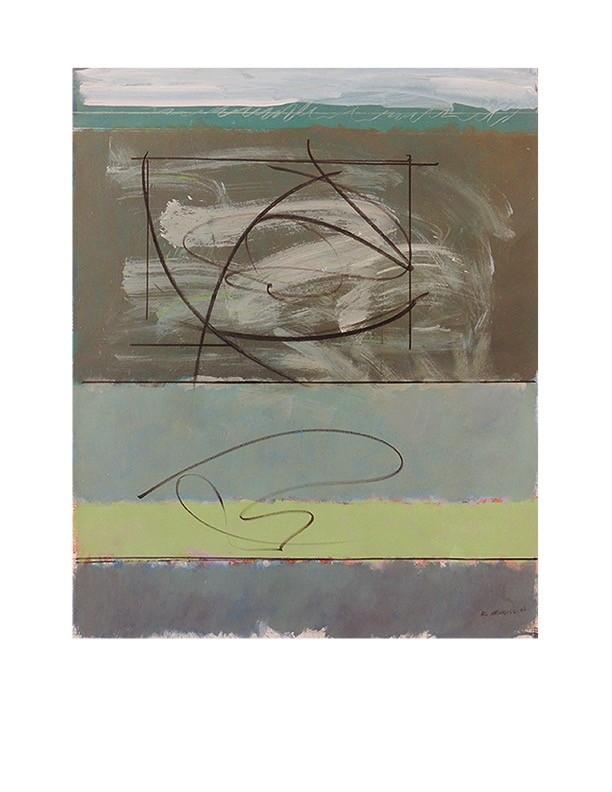
Born in 1915, Robert King entered Ohio State in 1934 as an art student and graduated in 1939 with a B.F.A. degree. In 1939 he traveled to Europe for additional study. In 1941 he received his M.A. and in 1945, after two years of military service, began teaching art at The Ohio State University. In the late 1940’s he made numerous travels throughout Ohio, capturing both rural and urban scenes primarily in pastel.
In 1950, Robert King had his first major exhibition of pastels, held at the Columbus Museum of Art. In the ensuing two decades, he would produce a remarkable body of work in a variety of media and styles. Some of his pieces from this time period clearly show an international influence, especially that of Picasso, Matisse, and Rouault. Other works, however, have a classic Eames-era look. In 1961, King undertook a prolonged study of Japanese calligraphy, which he felt would be beneficial in his pastel and charcoal works. By 1970, however, he turned almost exclusively to the collage medium.
In 1978, he retired from The Ohio State University as Professor Emeritus, an event marked by an exhibition of works by almost 80 of his former students. King and his wife Ruth retired to a house in Delaware, Ohio that Ruth had designed and built in 1958. He passed away in 2001, leaving behind a remarkable legacy of modern art uniquely his own.

ROBERT KING (American, 1915–2011)
Robert King
 Robert King
Robert King
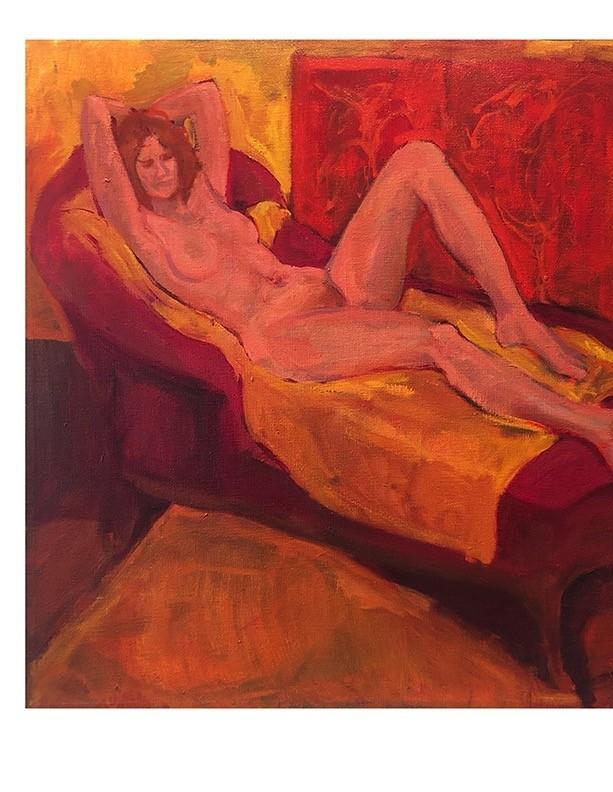
Glenn Rothman

RecliningNudeonRedChaise
NudeonRedChairStudy







Robert Knipschild Island,Maine(1953)
Gouache and acrylic on paper

13.5 x 17.5 in. framed
Robert King CityScene
Pastel on paper
12.5 x 28 in. framed
